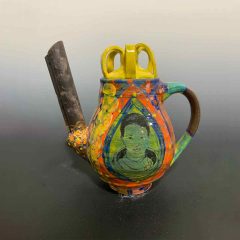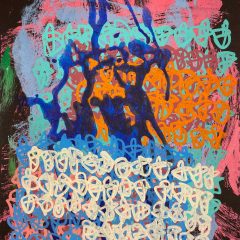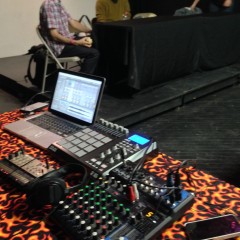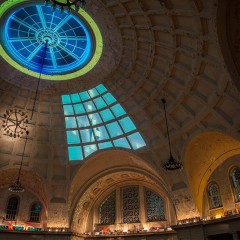This is part 2 of a post about Annette Monnier, including an interview I had with her in May. Part 1 is about her exhibit at Padlock Gallery, up through November.

Flower Arrangement #12; This time Monnier made the vase out of papier mache–a breakthrough, she decided.
Just out of the Art Academy of Cincinnatti four years ago, Annette Monnier came to Philadelphia because a bunch of people she knew had come here. The group– which included Nick Paparone, Jamie Dillon, Elsa Shadley and Carrie Collins, plus Monnier and her sweetheart Gerick Forston–founded Black Floor Gallery, which, after three years, as its final act, participated in the ICA show, Locally Localized Gravity.
Part of the group, including Monnier, Paprone, Dillon, plus David Dunn and Luren Jenison now run Copy Gallery in part of the space Black Floor used to occupy. Monnier likes working collectively. And in the exhibit 27, Monnier includes a giveaway zine entitled “Ordinary People Can Typically Gain Power By Acting Collectively.”
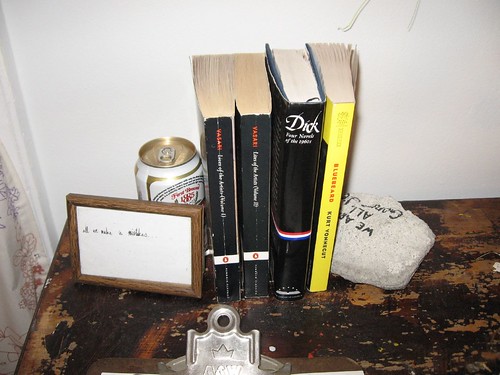
Some decor for the exhibit includes two volumes on art history by Vasari, Kurt Vonnegut’s Bluebeard, Philip K. Dick’s Four Novels of the 1960s (Monnier quotes his Do Androids Dream of Electric Sheep? (1968), in her zine), and a small framed sign reading, “all we make is mistakes…”
But I’m coming down to my bottom line on Monnier–that she’s one smart cookie–and she’s networked in.
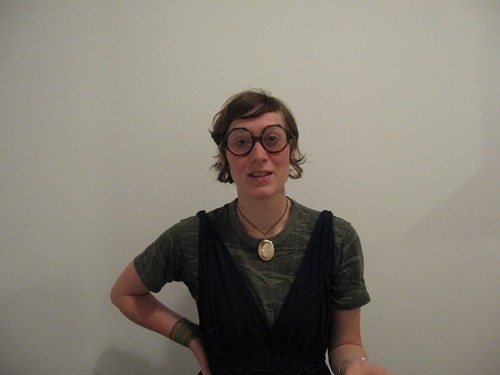
Annette Monnier back in May, shortly after Copy Gallery opened.
A few months ago, I talked to her about her various collaborative ventures:
Can we expect more of the same kind of open wall space show like the first one at Copy (Here and Now)?
We have a top-secret lineup.
There were a lot of rewards for having that show. So many people said thank you for giving me a place to show my work. People said, you should do this every year. It might happen. We invited the community in. We are trying to creat a dialogue, to get people talking.
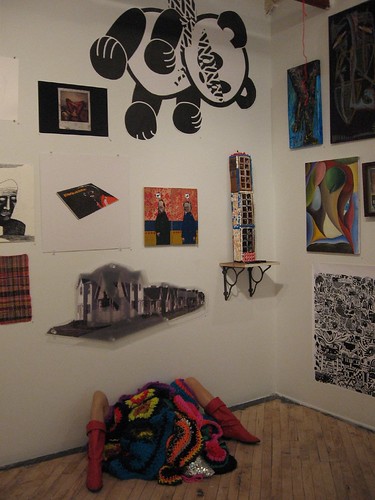
Installation shot of the you-drop-it-off, we’ll-show-it exhibit, Here and Now, which Monnier set up at Copy Gallery
The older I get, you feel like you know less every day. We probably started out more sure of our own aesthetic and had something specific to say about art. Working and meeting with artists, a lot of those lines get blurred.
We want the art to be good. We want to be amazed.
I’m scared of the concrete idea of what’s good. Traditions have closed out people who have something interesting to say.
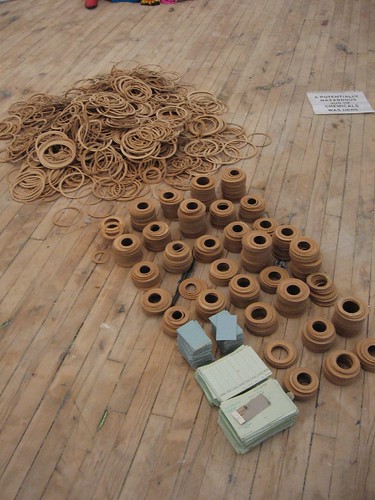
Eric Midgett, Workplace/Set it Up , at Here and Now show.
I interviewed Matthew Higgs from White Columns [for the blog Art in the Age]. He was saying the ideas the work brought up were what mattered. It didn’t have to be the most beautiful work of art.

Merchandise for sale at Copy Gallery
I really like writing blogs. It’s reaching out to the community. It’s another way to disseminate art work out in the culture. The t-shirts support that culture we’re trying to disseminate. [Monnier was referring to the t-shirts being made by Art in the Age, at that time of the interview run by Paparone et al. and distributed in part by Copy Gallery.]
You said you were working as a trend spotter. What sort of trends did you spot?
Colorful jeans. I spotted them a while back. Gray jeans. The color gray. People drinking Bud to be hip. Phantom phone syndrome–Is it going to be okay to be on the phone while ordering a sandwich?
How else do you make a living?
I teach classes for the Claymobile program in the public schools, in charter schools, Catholic schools. Even if the class is in chaos, everyone does and project, and you can’t tell whether the work came from a chaotic or an organized class.
What’s your impression of the Philadelphia art scene?
I don’t think we could have done what we did in New York–the prices, the expenses…
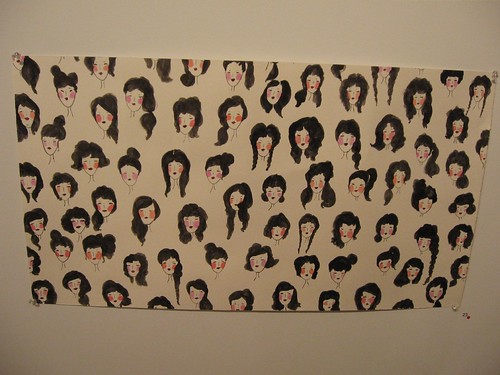
Mayu Hayashi, follow the trend, at Here and Now at Copy Gallery
How about how Philadelphia affected you and your art?
I used to be an art-making machine, before the gallery. After a show, I can’t see the forest for the trees. I get post-show depression.
Now I’m pretty optimistic again. The rest of the Black Floor members are splitting a studio back there (behind Copy Gallery). It’s great.
Sheets are going to be a continuing series. YOu can wash them and use them.
I’m doing black and white drawings. They are more illustrative than I’ve been in the past. It has to do with recording and getting into people and people’s stories. I was a snob about this in art school.
How’s it working sharing the floor with Vox Populi, now?
I think it’s great. I want to get more of a walk around crowd. It’s going to make the space more active. Artists need a place to be just as they need a place to show their work.
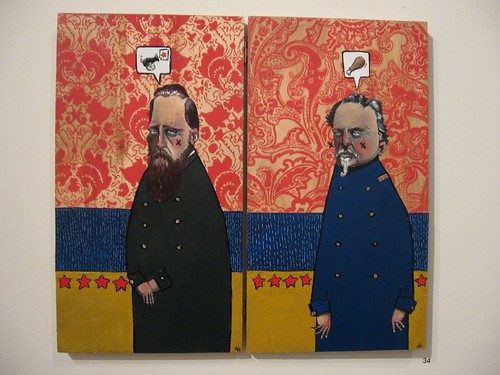
What’s some of the thinking behind the switch to the smaller space from Black Floor?
Black Floor was very ambitious. It was where I wanted to show my work. It had space for big installations, big projects. What we found out was, lots of people can’t fit it into their lifestyle, especially young artists putting their life on hold to make something ambitious. With this space, it’s going to fit in people’s lifestyles better.
We still have a lot of space for an artist to show their work. I guess we were going for quality, not quantity. …There’s so much art you can drown in it.
I like to work alone on my own on the art work where I’m completely in charge, where I can be a dictator. We all have different jobs in the gallery. Like David does video and video-editing. He knows how to hook up the projector. And Luren does store design at Urban Outfitters. She knows how to get things for display. She’s good with textiles.
And we all know different networks of people.
Sometimes I think about this weird family we’ve sort of formed. We’re sort of like siblings. I like to think everyone has a good opinion of each other, and that’s why we’re working with each other.


